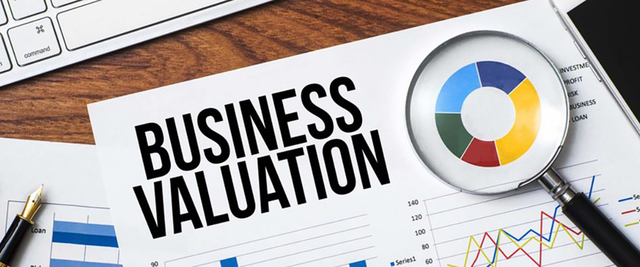
Unveiling the Essence of Business Valuation: An All-Encompassing Journey into the Artistry of Deciphering Business Worth.
Determining the value of a business is a crucial process that involves considering various factors, both financial and non-financial. To accurately assess the value of a business, there are several methods available, each with its own set of advantages and disadvantages. In this guide, we will explore ten essential methods and their formulas for business valuation.
- Discounted Cash Flow (DCF): The DCF model is widely used in finance and investment. It entails forecasting future cash flows of a business and discounting them back to their present value using an appropriate discount rate. The DCF method considers both expected cash flows during the forecast period and the terminal value, representing the business's value beyond that period.
- Discounted Future Earnings (DFE): Similar to DCF, the DFE method estimates the present value of future earnings generated by the business. It is particularly useful for valuing banking, finance, and insurance companies, as well as indices based on EPS growth.
- Dividend Discount Model (DDM): The DDM is commonly employed to value companies that pay dividends. It calculates the intrinsic value of a company based on the present value of its future dividend payouts.. The model assumes that dividends will continue in the future and grow at a steady rate.
- Enterprise Value to Earnings Before Interest, Taxes, Depreciation, and Amortization (EV/EBITDA): The EV/EBITDA method helps investors and analysts determine a company's value. It considers both equity and debt by calculating the enterprise value, which is then divided by EBITDA. This ratio provides insights into how much investors are willing to pay for each dollar of a company's EBITDA.
- Price to Earnings (P/E): The P/E ratio is widely used to compare a company's stock price to its earnings per share (EPS) over the past 12 months. It is crucial to consider industry peers and historical averages when interpreting a company's P/E ratio.
- Price to Sales (P/S): The P/S method evaluates a company's market capitalization in relation to its annual revenue. It is particularly useful for companies operating in volatile and competitive markets or those that are not yet profitable.
- Book Value: Book value assesses a company's worth based on its financial statements, primarily the balance sheet. It is calculated by subtracting total liabilities from total assets, representing the value that would remain if all liabilities were paid off.
- Price to Book Value (P/B): P/B ratio compares a company's market price per share to its book value per share. It helps identify undervalued stocks and allows for the comparison of relative valuations within the same industry.
- Liquidation Value: Liquidation value estimates the worth of a company's assets if it were to be sold off and its liabilities paid. It is particularly relevant for distressed or bankrupt companies and provides a starting point for determining the minimum value a buyer should offer.
- Market Capitalization: This method multiplies a company's current market price per share by the number of outstanding shares to determine its valuation.
It is important to note that each method has its limitations and should be used in conjunction with other valuation approaches for a comprehensive understanding of a company's value. Business owners and investors should consider multiple methods to obtain a more accurate assessment of a business's worth.
In my opinion The best way to determine the value of a Company that is still operating and growing is through a method called Discounted Cash Flows (DCF). This method involves predicting the future cash flows the business will generate and then adjusting them to their current value by using a suitable discount rate that considers the risks involved. The DCF method takes into account both the expected cash flows during a specific period and the value of the business beyond that period, known as the terminal value.
